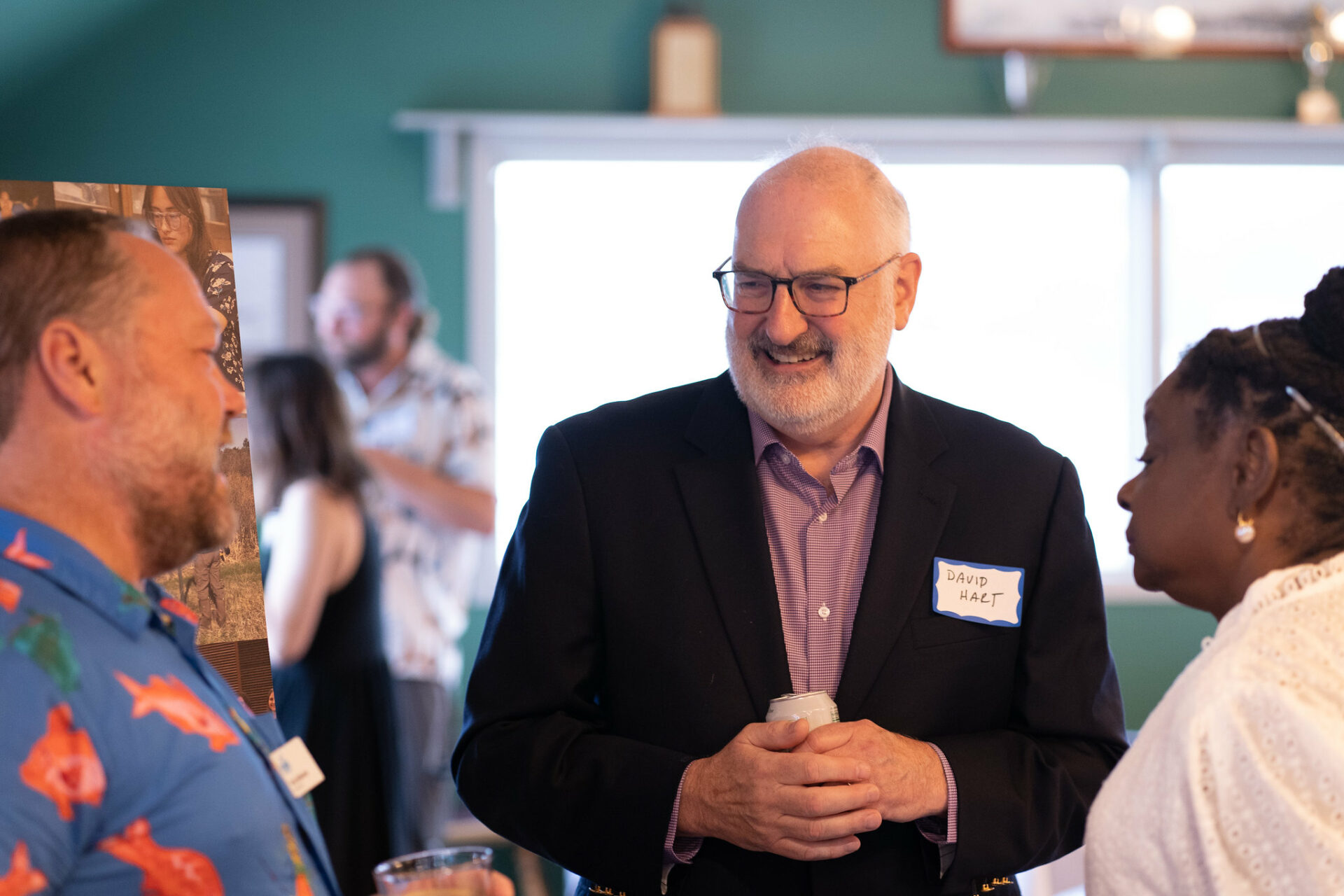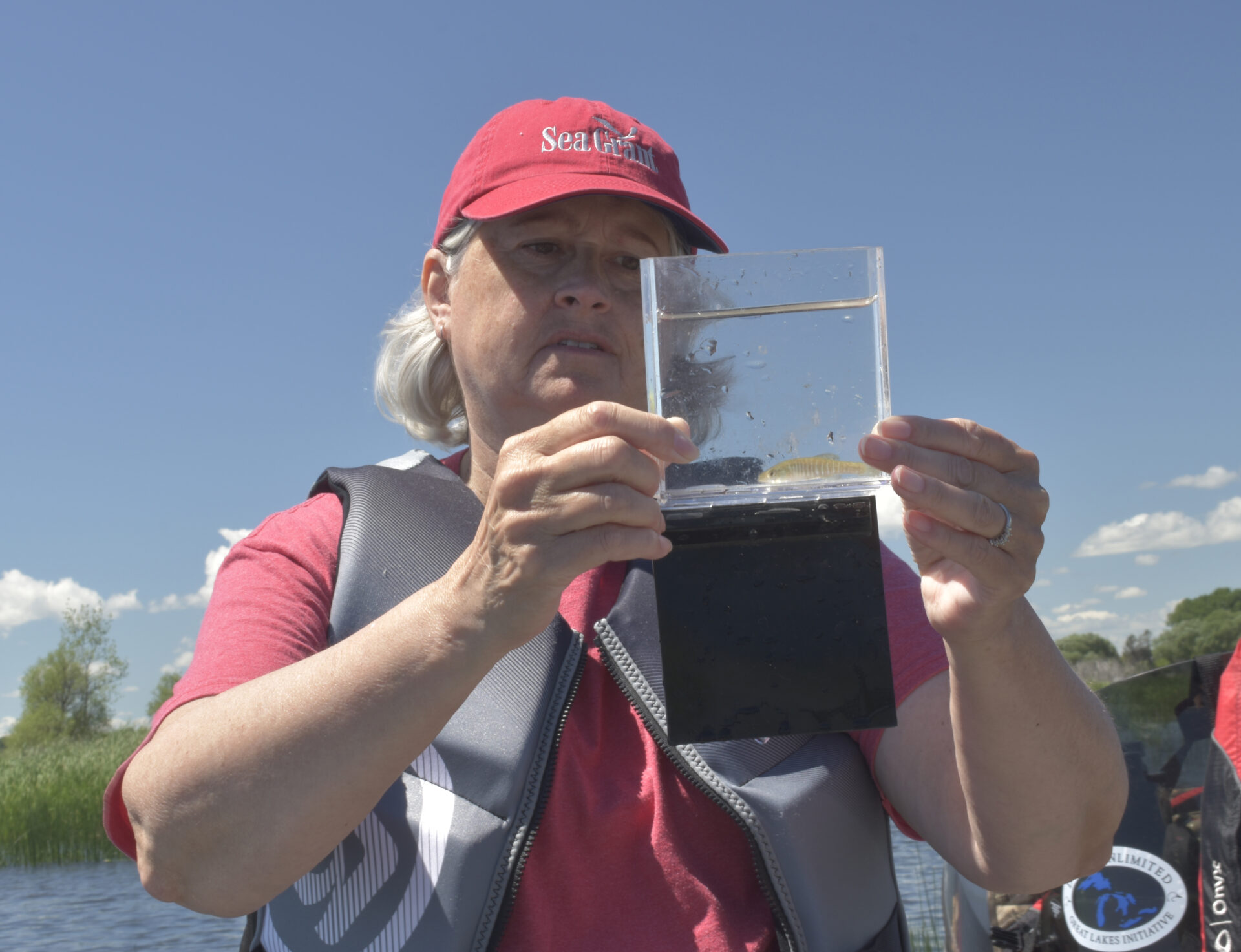The cover of the brochure for Virmond County Park in Mequon, Wisconsin, features a photo of a steep bluff that’s eroding into Lake Michigan. If Sea Grant’s Gene Clark and some project partners have their way, beach access for park visitors won’t require a nerve-tingling slide down the 130-foot high slippery clay slope. They could simply walk down a unique set of stairways designed to “go with the flow” of the hillside’s unstable conditions.
Clark, a coastal engineer for Wisconsin Sea Grant, is included in a grant recently funded by the Wisconsin Coastal Management Program and led by the Ozaukee County Planning and Parks Department to design, construct and demonstrate floating staircase sections that fit the bluff’s topography. If and when additional bluff movement happens, the staircases would not be destroyed, and could simply be repositioned so that they are level.
Once constructed, “The low-impact, low-cost staircases will be the first of their kind ever used in the Great Lakes and could provide a model for safe beach access in other unstable bluff areas,” said Clark.
Virmond County Park, just 14 miles north of Milwaukee, attracts visitors with its opportunities for swimming, hiking, picnicking, birding and majestic views of Lake Michigan from the bluffs. Park officials say that neighbors and visitors have expressed a “great desire” to have beach access from the bluff top. Some desire it so much that they have been creating their own trails down to the wide sandy beach, which has increased erosion and caused a public safety issue.
Neighboring residents whose yards have gentler slopes complain that park visitors are trespassing on their property to reach the beach. In 2013, students from nearby Homestead High School wrote a report providing ideas for improvement for the park. Better access to the beach was a top suggestion.
“Besides providing beach access, the pilot project offers a unique opportunity to protect a fragile clay seepage bluff ecosystem that has statewide significance,” said Andrew Struck, director of the Ozaukee County Planning and Parks Department.
He explained that the county had researched many access options down the bluffs, but these either had significant costs, timelines, or impacts on the bluff ecosystem and the park. Then the department hit on the idea of simplifying the process by designing a series of switchback trails and floating staircases that could be “rebuilt” and maintained as the bluff slumped or eroded over time.
“We hope the project will lead to safe, low-cost public access, with minimal ecological impact and environmentally sensitive design alternatives that can be used in other Ozaukee County parks as well as throughout the state to access the shoreline and the National Lake Michigan Water Trail,” Struck said.
“Typical wooden staircases for unstable beach bluffs require significant engineering and design efforts and bluff stabilization through grading by heavy equipment, and using deep piling supports,” said Clark. “Fixed stairways are also expensive and difficult to maintain in the long-run. With their permanent pilings and heavy wooden timbers, these structures have a high failure rate, especially when placed on clay bluffs. Once bluff movement occurs, these structures are toast.”
However, the floating staircases would use a low-impact approach by incorporating lightweight materials such as aluminum, with surface footings that offer minimal resistance to inevitable bluff erosion. These unique staircases come in prefabricated sections that are adjustable and removable without the use of heavy equipment or a lot of earth-moving.
When the bluff shifts, the staircases should “float” above the unstable soil without significant damage. The affected section can be releveled and adjusted to fit the changed grade and to fit into the other staircase sections.
“In the event of a catastrophic bluff failure, the entire structure could be moved by hand somewhere else,” Clark said.
Demonstration project construction is planned for summer of 2018. Other parts of the project include the construction of switchback trails, and revegetation of the bluff with native trees and shrubs. Educational signage and a project fact sheet will also be produced.
Besides the Ozaukee County Planning and Parks Department and Sea Grant, other organizations working together on the project are the Department of Civil and Environmental Engineering and the Environmental Fluid-Ecological Mechanics and Coastal Sustainability Lab at the University of Wisconsin-Madison, the Department of Geoscience at UW-Madison, the Wisconsin Geologic and Natural History Survey, the Milwaukee Audubon Society, several conservation corps organizations, and the state Coastal Hazards Work Group.
Additional funding is coming from the Brookby Foundation, the Wisconsin Department of Natural Resources Stewardship Program, and the Ozaukee County Planning and Parks Department.





